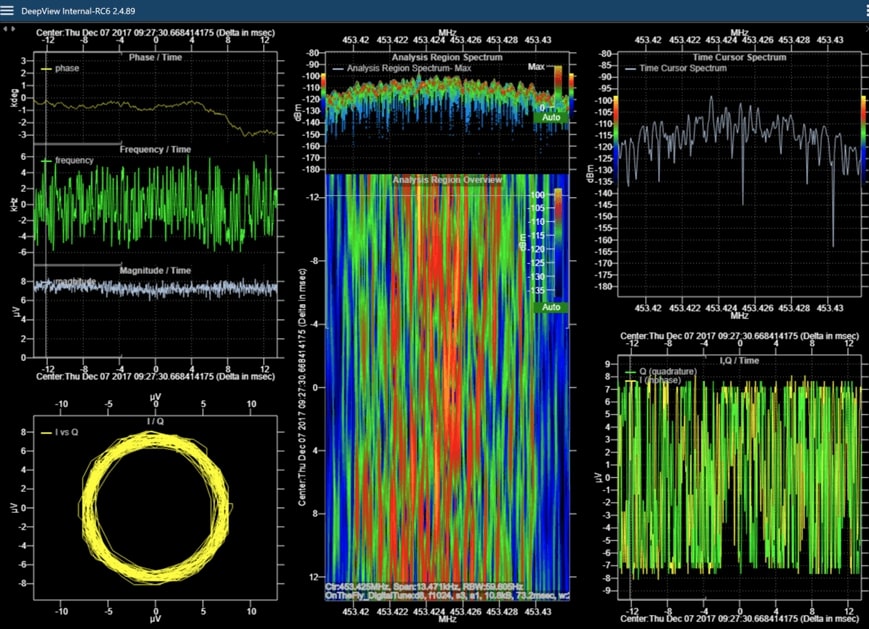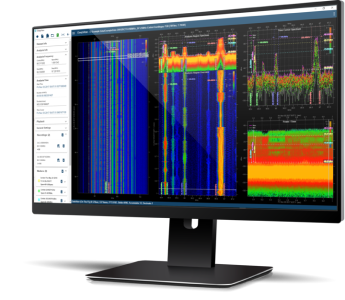How I/Q data helps speed up the intelligence cycle

The intelligence cycle is a systematic approach to collecting, processing, analyzing, and disseminating information, ensuring decision-makers have all they need to make informed choices. As part of this process, agencies gather data from various sources, including human intelligence, imagery intelligence, open-source intelligence, and SIGINT.
Speed is a critical element of the intelligence cycle as it enables decision-makers to make timely and informed decisions based on the most up-to-date information available—which can be the difference between success and failure or life and death. Therefore, speeding up the intelligence cycle as much as possible is a priority for all agencies involved.
But both speed and accuracy are important
Effective decision-making relies on obtaining accurate information quickly.
In any critical situation, information has a short shelf-life, so decision-makers need access to the most current information to make informed decisions. Delay in receiving information will likely result in missed opportunities or increased risk for the overall mission and the individual operatives.
Accuracy, however, is equally important. Quickly obtaining inaccurate or incomplete information means the decisions made based on that information will be flawed or ineffective—once again, negatively affecting the overall mission and the individual operatives.
The intelligence cycle is designed to balance the need for speed with the need for accuracy, ensuring that intelligence information is collected, processed, analyzed, and disseminated speedily but correctly. Having access to I/Q data helps with both of these requirements.
I/Q data helps with speed and accuracy
SIGINT analysts can accelerate their part of the intelligence cycle by using Radio Frequency (RF) data in the I/Q (In-phase and Quadrature-phase) data format. In the digital communications world, I/Q data is the “coin of the realm.” I/Q data provides a more efficient means of processing and analyzing data rapidly using software and advanced decoding algorithms.
Because the complete signal is represented in the I/Q data, so much vital information is available for rapidly processing that I/Q data, which helps speed up the stages of the intelligence cycle. Analysts can uncover header data, country codes, and other information payloads, including voice. Over time, networks can be created and further exploited through cyber means or monitored to create a target pattern of life.
|
High fidelity vs low fidelity While there is no strict definition, certain factors influence the fidelity of an RF recording. First, high fidelity should always include I/Q data, as this enables further demodulation and decoding. Second, having a high dynamic range increases the sensitivity and capture at the noise floor. Last, having wideband I/Q bandwidth and a high-frequency range also ensures more signals are captured. Low-fidelity SDR systems, such as hobby SDRs, do not possess the qualities for adequate capture as they lack sensitivity and frequency/bandwidth parameters. |

Breakdown of an I/Q signal in DeepView Software
Why SIGINT analysts need I/Q data as well as spectrum trace data
If a signal is a human, then spectrum trace is a photograph of the body, and I/Q is an X-Ray.
Spectrum trace data is a staple for initial analysis. While it doesn’t have the phase information that comes with I/Q, a spectrum trace recording is still valuable to understanding the spectrum as investigation requires a seamless I/Q capture. Additionally, spectrum trace data doesn’t require as much storage as I/Q data.
By analyzing spectrum trace data, SIGINT analysts can generally identify different types of RF signals, including those emitted by radios, radar systems, and other electronic devices. This information can be used to identify patterns and anomalies in the spectrum and to identify potential threats or targets of interest. Spectrum trace can also allow SIGINT operators to go from wideband monitoring to targeted signal I/Q collection.
Following this chain is like first using your eyes, then binoculars, and finally a microscope. Starting out with a microscope would not work.
Spectrum trace data can also be used to diagnose issues that may be affecting signal quality, such as interference or jamming. This information can be used to develop countermeasures to prevent or mitigate these issues.
However, to gain a complete understanding of RF signals, SIGINT analysts also need I/Q data. This provides information about the amplitude and phase of a signal, which is required to identify and analyze complex signals, such as those used in digital communications and radar systems.
In addition, I/Q data can be used in advanced processing and analysis techniques, such as digital signal processing (DSP), to identify and classify signals of interest more accurately and efficiently.
|
By working with spectrum trace data and I/Q data, a SIGINT analyst can better understand RF signals and the systems that produce them. For example, spectrum trace data can first be used to identify a signal of interest; I/Q data can then be used to analyze the modulation and encoding of the signal. |
Combining the information from the spectrum trace data and the I/Q data, the SIGINT analyst can identify the specific type of encrypted communication signal and then start to decode and analyze the signal.
Example of radar analysis in DeepView Software
Lessons from the Iraq war – how high-fidelity spectrum trace and IQ recording saved US soldiers’ lives
In 1605, the IED (improvised explosive device) was Guy Fawkes’ weapon of choice. Forward 400 years and the IED continued to be an effective device—responsible for 60 percent of US casualties and fatalities in the Iraq War. Taking advantage of consumer electronics, insurgents created Radio Controlled Improvised Explosive Devices (RCIEDs), allowing a $200 device to disable a vehicle worth half a million dollars. Despite vastly superior military tactics, cheap, homemade weapons were crippling US forces.
US commanders developed a three-pronged strategy to deal with RIEDs. Part of this strategy involved protecting soldiers and equipment with electronic jammers for RIEDs. However, insurgents soon adapted by developing countermeasures to the RF jammers. Their countermeasures included techniques such as frequency hopping and spread spectrum modulation to hinder jammers from disrupting their signals.
To develop counter-countermeasures, the US military needed to capture and analyze the signals used by the insurgents. Spectrum analysts monitored the spectrum and intercepted signals, using high-fidelity RF recording systems. The recorded signals were replayed, and spectrum analysts conducted an in-depth analysis of the data using signal processing and analysis software to identify the techniques used by the insurgents.
High-fidelity RF data was captured using robust, portable recorders capture devices and stored in I/Q format for analysis. This data allowed US forces to develop more advanced countermeasures, such as more effective jammers against frequency hopping or spread spectrum modulation.
High-fidelity RF recording for SIGINT saved US soldiers’ lives.
Conclusion
SIGINT operators need I/Q data to break down modern digital signals, listen in, and then create accurate reports to feed the intelligence cycle. They can use spectrum trace data to also support rapid signal identification at the wideband level, and then dig deeper through targeted I/Q collection.
Jaimie Brzezinski
Jaimie Brzezinski is Head of Content for CRFS. His specialty is turning highly technical ideas into engaging narratives. He has 15+ years of experience in writing technical content and building global teams of subject matter experts.



